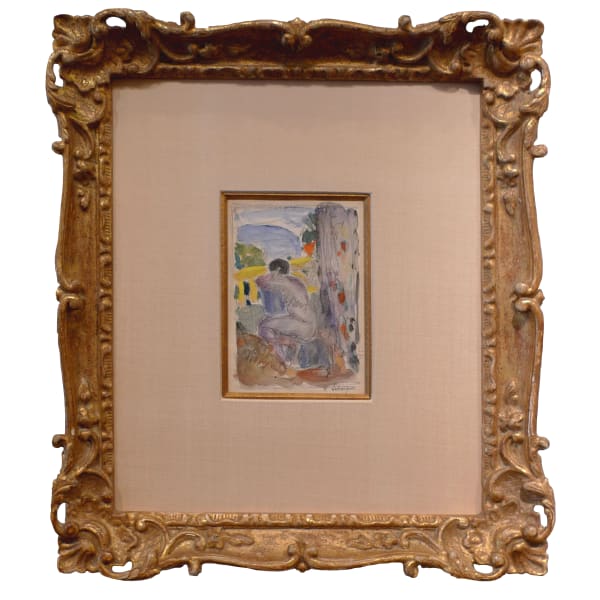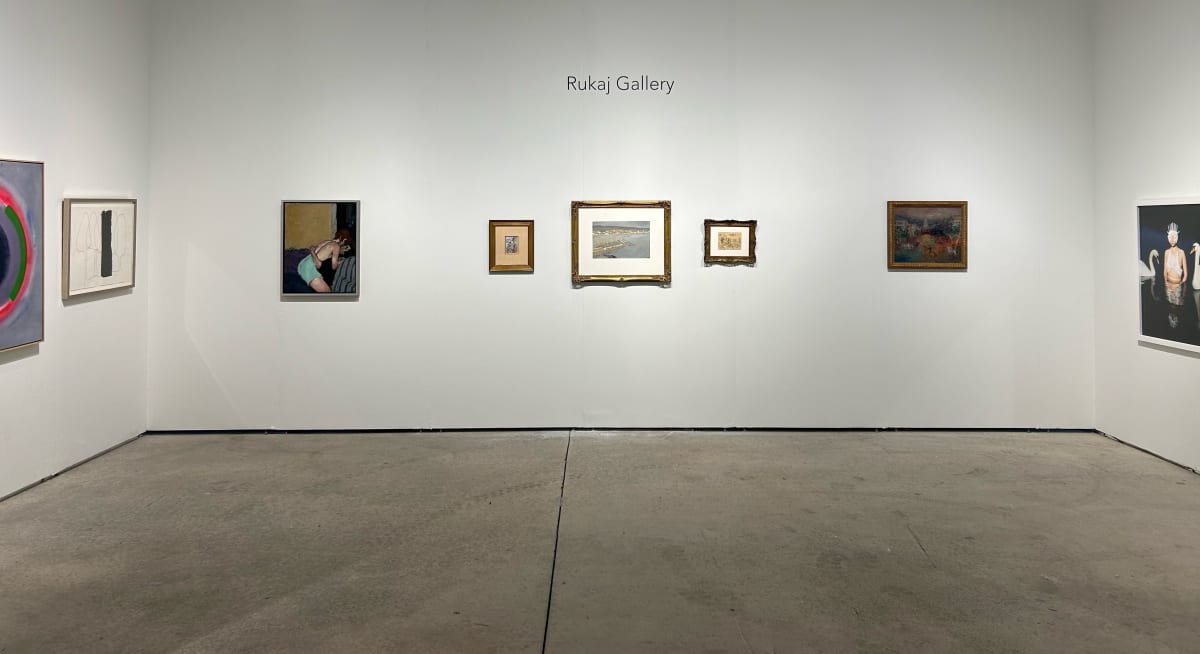Henri Lebasque French, 1865-1937
Henri Lebasque was born in Champigné, France, and studied painting at the Ecole des Beaux Arts in Paris. There, he began to exhibit with several renowned artistsʼ associations of the time such as Les Nabis (the prophets) and the Intimists. Lebasque frequently participated in the acclaimed Salons of Paris. In 1903, he was instrumental in the formation of “Salon d’Automne” with his close friend Henri Matisse. This Salon hosted the début exhibition of Les Fauves.
In the early years of his career, Lebasqueʼs primary influences ranged from Luce to Seurat. His paintings were created using pointillism as a predominant technique. The artist displayed his background in colour theory through the use of complementary colours in shading. In the early 1900s Lebasque was exposed to Fauvism, and the Fauvesʼ painterly qualities and bright colours profoundly inspired him. Lebasque began to incorporate flatness of form and wild colour choices into his own works.
In 1924, Lebasque moved to the French Riviera to pursue a continued education in visual arts. The move catalyzed a thematic transition and a radical change in his colour palatte. The artist refocused his attention to paint scenes of light and cheer, including a prevalence of subject matter pertaining to the artistʼs own family and the vegetation of Saint Tropez.
Lebasqueʼs paintings are praised for their wide range of bright colour and intimacy with the subject matter. They exude liveliness and optimism. Throughout his years of practice, Lebasque cultivated a reputation in the art world as “the painter of joy and light.”


